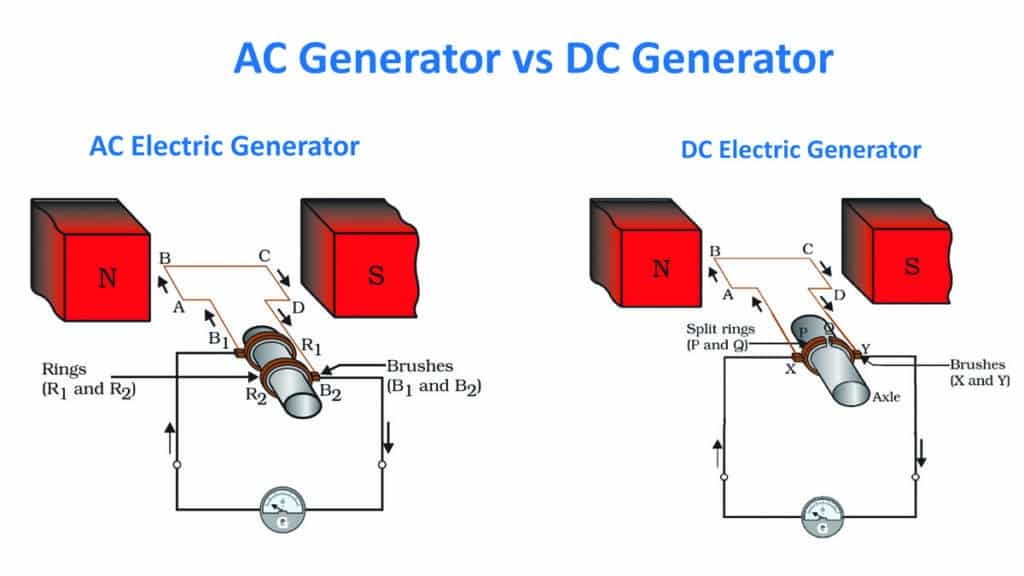Difference between ac and dc current Circuit Diagram This can be achieved using a bridge rectifier circuit, which consists of four diodes arranged in a specific configuration known as a bridge. In this setup, both the positive and negative halves of the AC waveform are rectified, resulting in a smoother DC output. Also Check, Difference Between AC and DC Generator; Difference Between AC and DC Motor Differences. AC and DC currents are generated differently. DC is generated from batteries and DC generators, while AC is generated from AC generators and electrical power plants, which convert mechanical energy into AC power more readily than they would DC power because these generators typically rely on circular or oscillatory motion that directly induces alternating current. One of the major differences between the alternating and direct current is that in alternating current the polarity and the magnitude of the current changes at the regular interval of time whereas in direct current it remains constants. Some of the differences are explained below in the form of the comparison chart by considering the various factors;

Both AC and DC describe types of current flow in a circuit. In direct current (DC), the electric charge (current) only flows in one direction. Electric charge in alternating current (AC), on the other hand, changes direction periodically. The voltage in AC circuits also periodically reverses because the current changes direction.

Alternating Current (AC) vs. Direct Current (DC) Circuit Diagram
Electric current flows in two ways as an alternating current (AC) or direct current (DC). The main difference between AC and DC lies in the direction in which the electrons flow. In DC, the electrons flow steadily in a single direction, while electrons keep switching directions, going forward and then backwards in AC. Alternating current (AC) and Direct Current (DC) are the two main types of electricity. Also, these two circuits show the structure of circuit systems. Inductors, resistors, and capacitors are the primary components of AC circuits. These are all passive electrical components. They have got one common property which is that they all restrict the flow […] Storage and Conversion From AC to DC and Vice Versa. AC can even be changed to DC by an adapter that you might use to power the battery on your laptop. DC can be "bumped" up or down, it is just a little more difficult. Inverters change DC to AC. For example, for your car an inverter would change the 12 volt DC to 120 Volt AC to run a small device.

The AC current is generated by the alternator while the Photovoltaic cells, generators, and batteries generate DC current. The AC load can be capacitive, inductive, or resistive but the load on DC is always resistive. The DC current graph has a constant line showing magnitude and direction is constant while the AC current can be a sinusoidal According to Karl K. Berggren, professor of electrical engineering at MIT, the fundamental difference between AC and DC is the direction of flow. DC is constant and moves in one direction. "A simple way to visualize the difference is that, when graphed, a DC current looks like a flat line, whereas the flow of AC on a graph makes a sinusoid or
